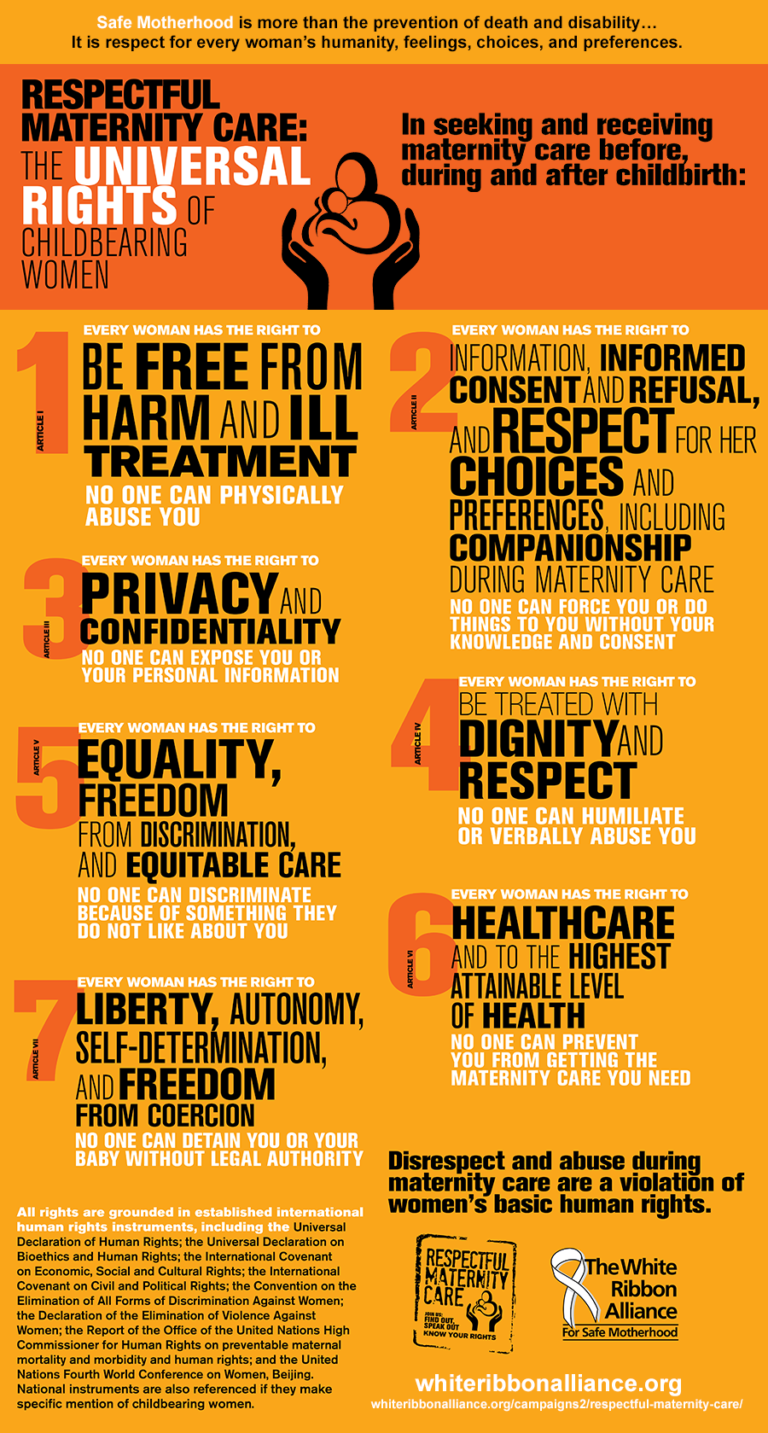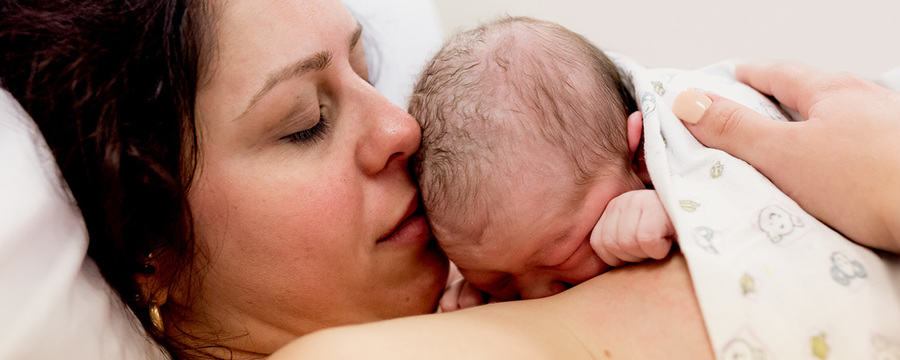Conveyor-belt care

Share this step
You would have noticed in Janet’s story that she had very little control over what was happening to her. She wasn’t able to even express her desires or choices clearly to her caregivers during pregnancy or in her birth, let alone have her needs met. Instead she was a recipient of care that other people decided she needed.
Unfortunately Janet’s experience of lack of choice and loss of control is common amongst women birthing within fragmented maternity systems. Some women accept the situation – they don’t think they should question the advice given by ‘experts’. Instead, believing they are doing what’s best for the baby, they hand over control, often without realising it. Other women, though, struggle with the expectation to conform without question to procedures and interventions others decide to be necessary.
Women may be told that their choices and preferences would place the baby ‘at risk’, even when there is no clear evidence either way. For many women, this creates a sense of conflict in having their choices about what is safest and best for themselves and their baby both discredited and denied.
What impact does this have?
Choices made in pregnancy mark the dawning of motherhood. So when a woman’s instincts, thoughts and feelings about her baby are disregarded, there is a longer term impact: on her, on other women, and on society at large.
Some effects of this loss of control and disempowerment are predictable: a woman’s initial bonding and attachment with her baby at birth may be interrupted or challenged, her self-worth may be affected (‘my body failed me’ is an all-too-common statement made after a difficult and unsupported birth), there may be ongoing trauma, and fear of future birthing experiences. Other effects are vicarious: as women share their stories it increases the underlying fear of childbirth within our society, and the ‘horror stories’ continue to be passed around.
Let’s have a quick look at the statistics to see what’s happening in our current maternity care system:
- Around 30% of women have 3 or more symptoms of post traumatic stress disorder (PTSD) 4 to 6 weeks following birth (Creedy, et al, 2000)
- Around 20% of women experience high levels of childbirth-related fear (Toohill, et al, 2014)
- Between 3 to 6% of women will have full-blown PTSD as a result of childbirth (Patrick, et al, 2011)
- About 15 to 20% of women suffer from postnatal depression (O’Hara, et al, 2013)
- Even though around 96% of women initiate breastfeeding at birth, globally less than 40% of babies under 6 months are exclusively breastfed (WHO, 2017).
Disrupted birth can lead to broken-down relationships, lack of connection, fear of childbirth, inter-generational trauma – all these are impacted by how a woman experiences her pregnancy, birth and the early days of mothering. While these might seem to be small issues in the context of a physically healthy mother and child, there are significant long-term implications for society. (Beck, et al, 2013.)
Women who are socially or financially disadvantaged may face even greater vulnerability within the maternity care system – victims of domestic violence, women with mental illness, socially isolated women, LGBTQIA+ (Lesbian, Gay, Bisexual, Transgender, Queer, Intersex, Asexual, +) people, and other minority groups. In a fragmented care system, there is little ability to cater for – or even recognise – a woman’s unique needs.
This is a global issue, receiving global attention
The treatment you’d expect from a maternity care provider seems fairly clear: high level clinical competence within a relationship based on caring, trust, empowerment, and respect. Unfortunately, for many women, their experience is a far cry from this.
Globally, some of the care provided to women can be classified as disrespectful and abusive – in both developed and developing nations. Some call this a ‘willful blindspot’ in that it evades the attention of health authorities and the global health community – it’s easier to look away than to find the necessary solutions to a maternity care system in trouble. But women notice. Human right organisations are beginning to notice. And something needs to change.
 Respectful Maternity Care © White Ribbon Alliance
Respectful Maternity Care © White Ribbon Alliance
Lack of consent, and even direct violations of rights, occur on a daily basis in childbirth: discriminatory care; women forced into medical interventions without consent and without clear benefit to their baby – including forced internal vaginal examinations; verbal coercion and lack of informed choice.
It’s important to understand that the consequences of a maternity care system that treats women like the next item on a conveyor-belt isn’t just in how women feel about their experience (though that’s important enough): the ramifications of a difficult or unsupported maternity experience are ongoing and may impact every facet of a woman’s life, from physical health to her emotional wellbeing.
One thing is clear: where there are clearly defined and cohesive relationships between women and their health care providers, care becomes more humane, less coercive, more respectful, and safer.
Over to you
It is difficult to think of birth as a place where disrespect or direct abuse of power may play out. Yet across the world, in different contexts and in different ways, this is what is happening.
Have you seen evidence of this around you? And if so, what do you see as the solution?
References
- Creedy, D. K., Shochet, I. M., & Horsfall, J. (2000). Childbirth and the development of acute trauma symptoms: Incidence and contributing factors. Birth, 27(2), 104-111. doi:10.1046/j.1523-536x.2000.00104.x
- Toohill J, Fenwick J, Gamble J, Creedy D: Prevalence of childbirth fear in an Australian sample of pregnant women. BMC pregnancy and childbirth 2014, 14:275.
- Patrick, J., Devilly, G., O’Donovan, A., Alcorn, K. L., & Creedy, D.K. (2011). PTSD due to childbirth stands at between 3.1% (adjusted) and 5.8% (unadjusted). Response to Matthey. Psychological Medicine 41 (12), 2683-2686, doi:10.1017/S0033291711001930
- O’Hara, M. W., & McCabe, J. E. (2013). Postpartum depression: Current status and future directions. Annual Review of Clinical Psychology, 9(1), 379-407. doi:10.1146/annurev-clinpsy-050212-185612
- World Health Organization. (2017). 10 Facts on Breastfeeding. Accessed at http://www.who.int/features/factfiles/breastfeeding/en/
- Beck, C. T., Driscoll, J., & Watson, S. (2013). Traumatic childbirth. Abingdon, Oxon;New York;: Routledge. doi:10.4324/9780203766699
Share this
Maternity Care: Building Relationships Really Does Save Lives

Maternity Care: Building Relationships Really Does Save Lives


Reach your personal and professional goals
Unlock access to hundreds of expert online courses and degrees from top universities and educators to gain accredited qualifications and professional CV-building certificates.
Join over 18 million learners to launch, switch or build upon your career, all at your own pace, across a wide range of topic areas.
Register to receive updates
-
Create an account to receive our newsletter, course recommendations and promotions.
Register for free







